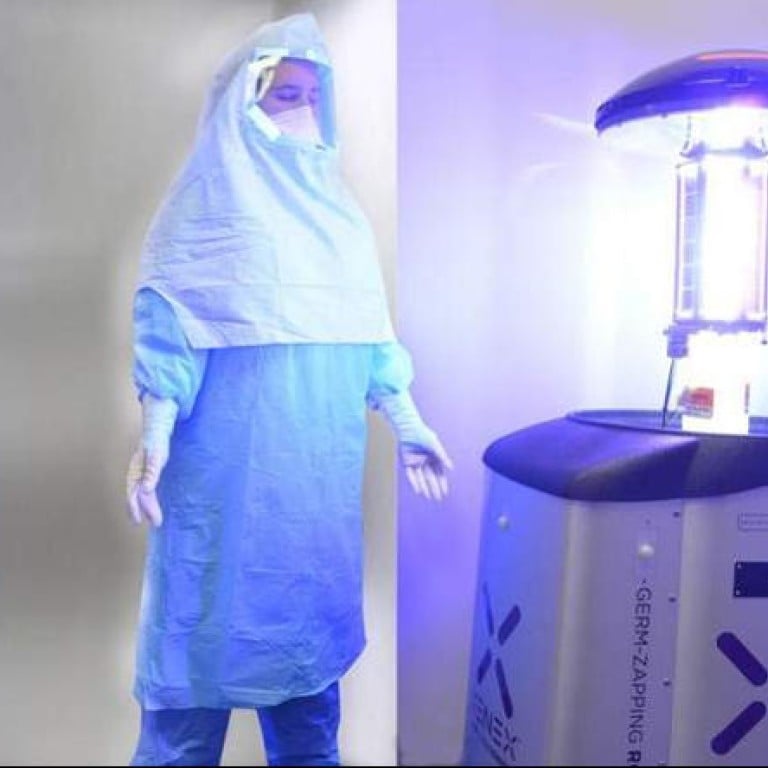
United States military using ultraviolet robot in Ebola war
A germ-killing weapon that disinfects entire rooms with blasts of ultraviolet light has been enlisted by the United States military in the fight against Ebola.
A germ-killing weapon that disinfects entire rooms with blasts of ultraviolet light has been enlisted by the United States military in the fight against Ebola.
Resembling a taller, skinnier version of R2D2 from , the four-wheeled robots are operating at three military medical centres, with another 250 American hospitals using the machines to destroy pathogens.
The robot - which sends out 1.5 pulses of light a second in a 3 metre radius - uses xenon, a non-toxic gas, to create the ultraviolet rays that eradicate germs faster and more thoroughly than any human cleaning crew .
"The robot is currently part of our Ebola mitigation strategy, but will be used across the hospital to combat a variety of other pathogens known to cause hospital-acquired infections," said Alton Dunham, a spokesman for Langley Air Force Base, which has acquired one of the robots.
Although the process of using ultraviolet light for cleaning has been around for decades, the new robot uses environmentally-friendly xenon instead of mercury-vapor bulbs.
Researchers say the disinfecting bot - manufactured by Texas-based Xenex Disinfection Service - is just one example of how autonomous devices could play a crucial role in the fight against the Ebola outbreak in West Africa.
" [Robots] could be immediately repurposed now to protect Ebola health workers," Texas A&M University computer science and engineering professor Robin Murphy said this month.
But any robots would have to fit into the wider medical effort, take the local culture into account and avoid imposing radical new procedures on stressed health workers, she added.
A clinic in Liberia or Sierra Leone also presents significant challenges to robots designed in more pristine Western settings - wifi access, ample power, batteries and flat surfaces may not be readily available in areas where the robots are most needed.
There are no immediate plans to send the Xenex robot to West Africa but concern over the Ebola outbreak has underscored the wider problem of hospital-associated infections in the US and other Western countries.
Hundreds of American patients die every year of infections contracted during hospital stays.
Dozens of hospitals using robots have reported infection reductions, Xenex spokeswoman Melinda Hart said.
The robot's ultraviolet light can disinfect surfaces and hidden areas even the most diligent human cleaner cannot reach.
"[It] is able to eliminate the risk of human error," Hart added.
